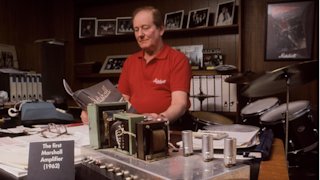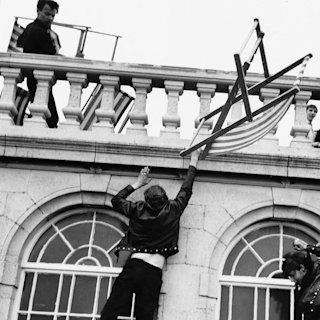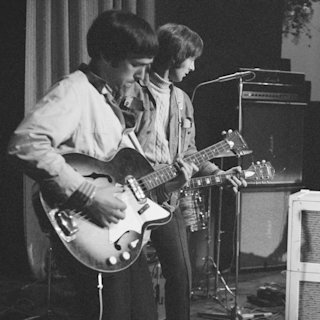
Jim Marshall browses the Marshall catalogue beside the first Marshall Amplifier.
Jim Marshall’s drum students and Terry Marshall’s bandmates flocked to the Marshall shop – and, before long, it was the local hangout for young musicians. Early patrons included Ritchie Blackmore (of Deep Purple and Rainbow), Jimmy Page (Led Zeppelin), and Pete Townshend (The Who). And since none of the jazz-centric music stores of the West End would take these nascent rock ‘n’ roll guitarists seriously, it was up to Marshall to fulfil their demands for a sound to distinguish them from their contemporaries.
Jim and Terry Marshall, along with their service engineer Ken Bran, began to fashion together prototypes for a thunderous new amplification device, initially experimenting with military components left over from the Second World War. Eventually, the team – guided by the saxophonist's ears of Terry – landed on a design that would later become known as ‘Number One’.
THIS WAS THE PERFECT PIECE OF KIT FOR THE ROCK ’N’ ROLLERS KEEN FOR A SPIKY SOUND TO DEFINE THEIR GENERATION.
Number One.
What this revelatory contraption (a compact speaker cabinet housing four twelve-inch speakers) provided was a cheaper and noisier alternative to the cleaner Fender amps available elsewhere. Better yet, it offered something new – by playing loud, the sound would start to break up, and become distorted and saturated. This was the perfect piece of kit for the rock ’n’ rollers keen for a spiky sound to define their generation.
The inimitable Marshall sound would become the ubiquitous “rock” tone forever thereafter, and the ‘Number One’ would be the first of many JTM45 amps. Aptly named, the initials stand for Jim and Terry Marshall, while the ‘45’ refers to the RMS (root mean square) value – another distinction from rival manufacturers, who rated their amps at peak power.


